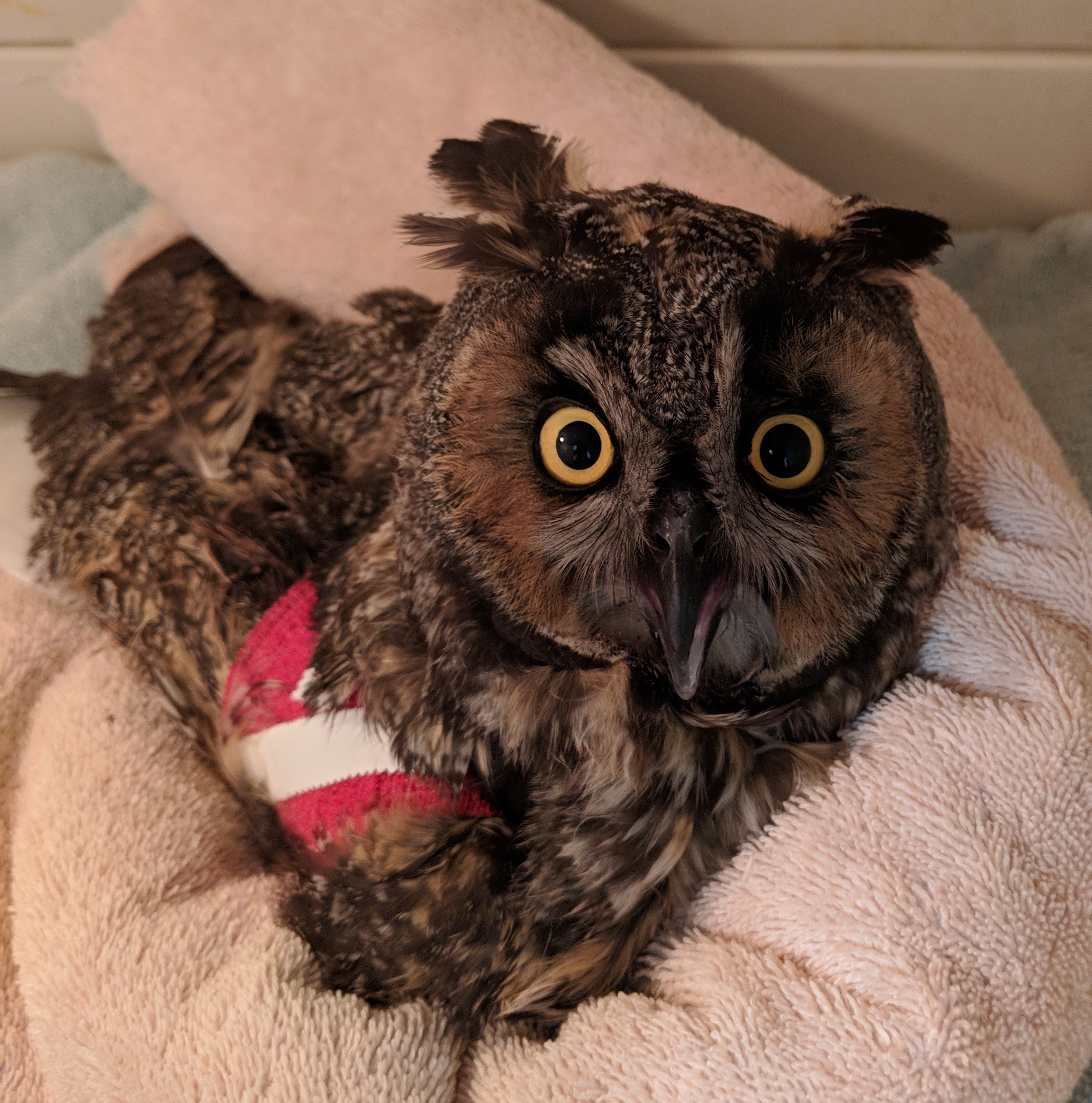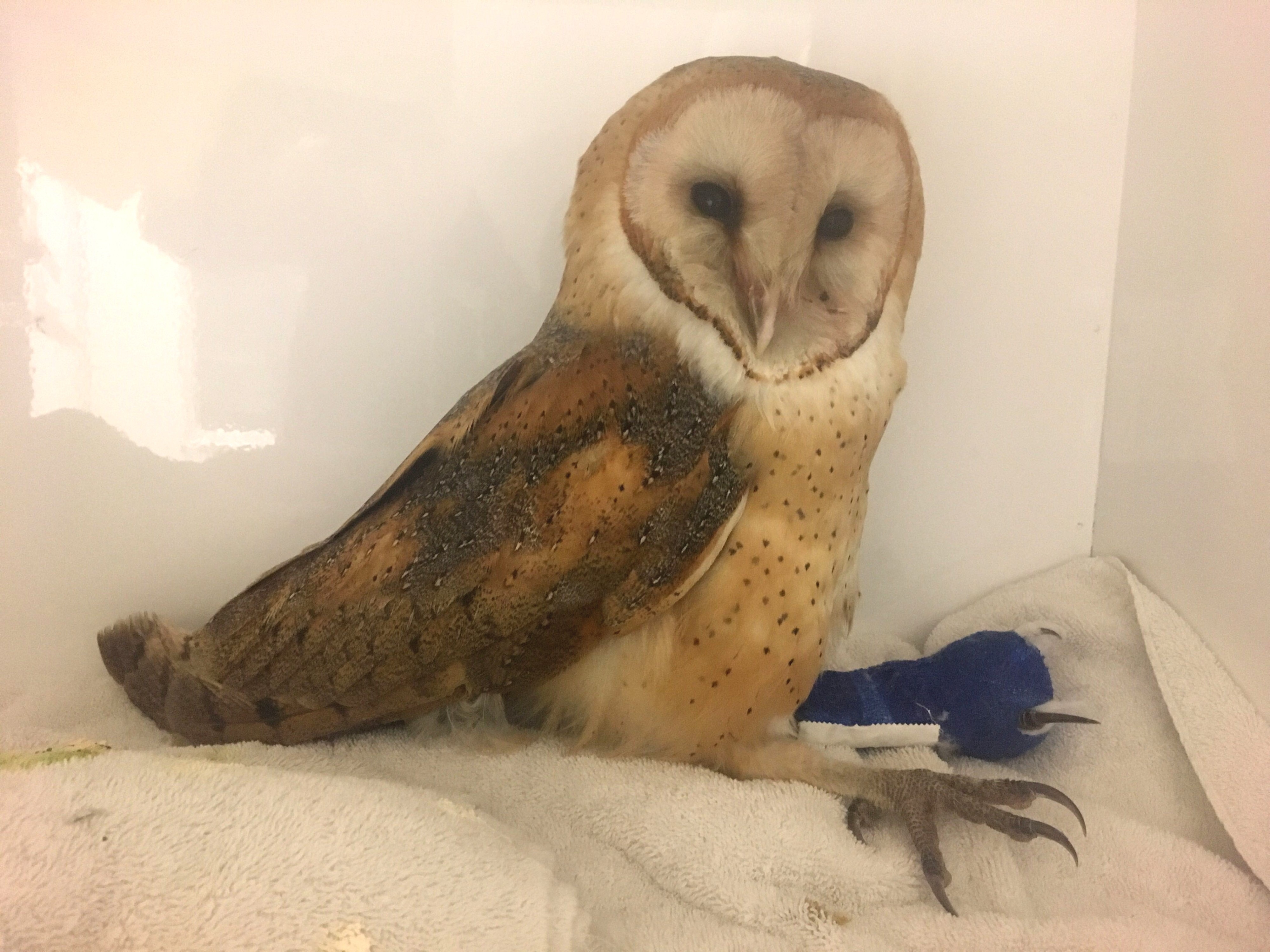Treating a Parliament of Owls
By Cambria Wells, Wildlife Technician

This Long-Eared Owl suffered a wing fracture
Photo by Samantha Orzech
It’s the beginning of Owl breeding season, and the intensive care unit is
packed with an assortment of these special birds. Owls are among CWC’s most diverse patients; they encompass some of our largest and smallest raptor patients, come from a dramatic range of habitats and circumstances, and have some of the new year’s most impressive recovery stories.
A Long-Eared Owl rescued in Malibu this past December has just moved to an outdoor enclosure for conditioning. He was injured while overwintering in our area. The soft tissue damage around his wing fracture meant that his prognosis was guarded, but two months and several surgeries later he is flying with confidence and nearly ready to return to the wild. This Long-Eared Owl and a Western Screech-Owl, both current CWC patients, had part of an eye removed this month. Thanks to their highly sensitive hearing, these birds are adjusting well and will still be able to thrive and hunt in the wild upon release.

Barn Owl 19-62 arrived with a broken leg
Photo by Cambria Wells
Another CWC Owl patient, a Barn Owl, was admitted after the recent storms with two fractures to the tarsometatarsus bone in her lower leg. She was very wet and dirty from being found on the side of the road, leaving her weak and unable to thermoregulate. Her unstable condition and the proximity of the fracture to a joint made her surgery difficult, but thanks to Dr. Stephany Lewis’ work in pinning her bone she now has a brighter future ahead.
Our Owl patients display their will and vivacity by surviving head trauma, serious fractures, secondary poisoning and more. Currently, we are experiencing an influx of injured Owls as they compete for breeding partners. We will see another wave when orphaned Owlets begin to arrive in early March, and when juvenile Owls run into trouble after leaving their parents later this summer. Every one of these patients, and their healthy cousins beyond our walls, deserve all the care, conservation, and respect that we can offer as they live out their wild lives around us.
